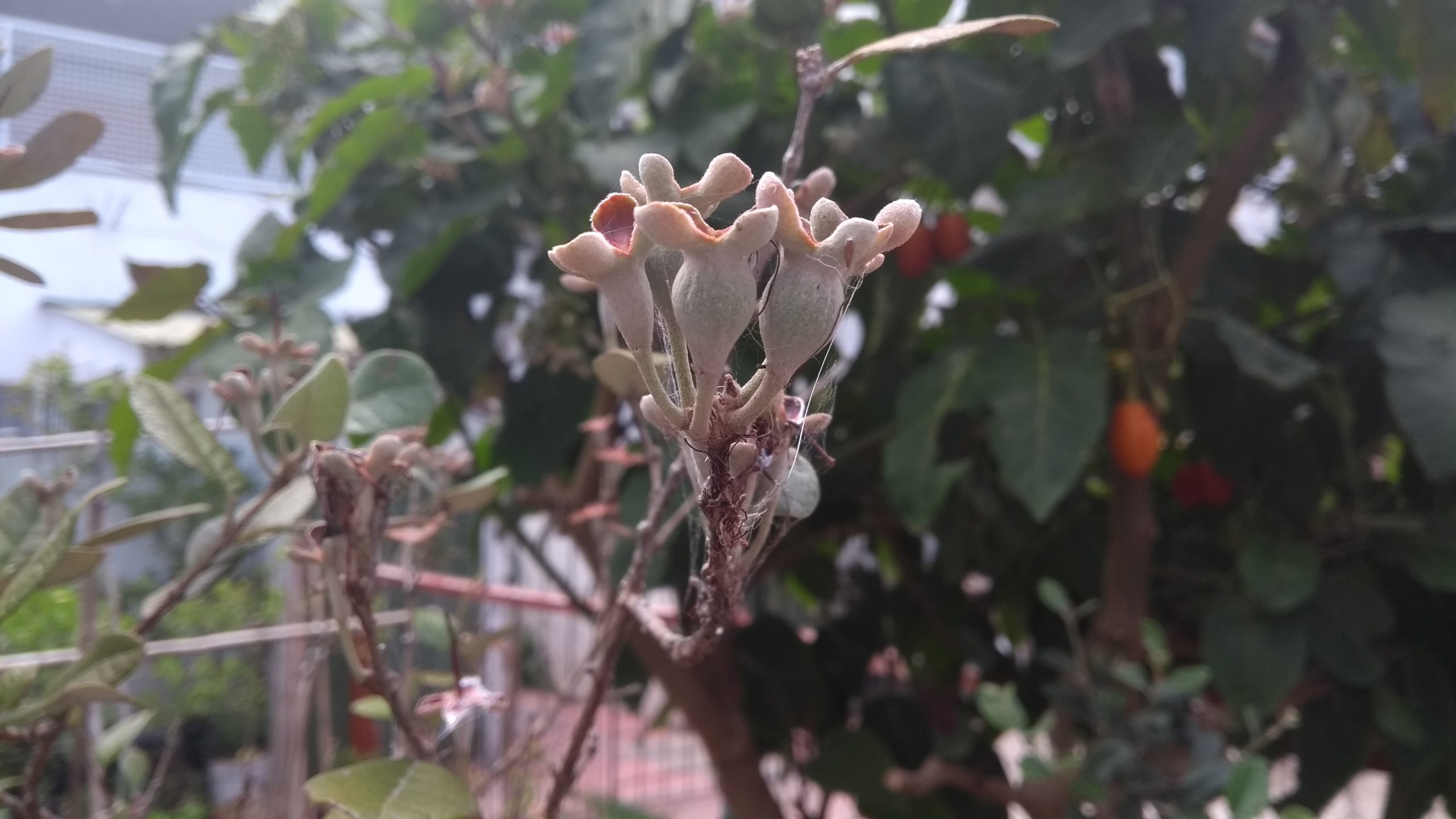Today I woke up in a good mood because I knew I would try the first fruit of the native plant called arazá in Latin America, and strawberry guava in Spain and elsewhere.
I went to the 3 years old tree and I took some photos of mature and immature fruits:
ripe fruits
(immature fruits, the plant is very productive)
I touched one of them, the first to turn red (had to wait three days since it began to change color) and was half soft, then I pulled it out and it gently detached.
I took some photos to take into account its size (about 3cm in diameter):
I went to the dinner table, cut it in half and felt the aroma:

Came off a little juice. The aroma seemed similar to a tomato mixed with some grape flavor.
I removed the seeds because I will do some plants from these fruits. There were 19:
And of course I ate it! Months waiting to try one of these fruits that are not available in Argentina even in any grocery store! The taste is good, sour and sweet, to me is very similar to a tomato mixed with a grape, but it has something else that is indescribable and logically owned by the fruit itself. It was a bit sandy but I found that it does not mind at all, on the contrary, becomes interesting.
It was not necessary to add sugar, which happens with other traditional fruits such as strawberries.
In the end, it feels a very personal aftertaste remaining in the mouth, which I loved and I’ve tried beforefrom homemade jam from guava (Psidium guajava). Could it be what is called tannins?
Anyway, being a fruit as healthy (lots of vitamins and antioxidants), juicy and tasty, I think has a great future both for fresh consumption and for jams or any other type of industrialization or pastry that is made with traditional fruits .
When I feel that taste like tomato, I wonder how it will be actually applied as a sauce for pasta!
Updated, 6 march 2013
I picked up a more ripe one:
it smell like strawberry 
I tried this more ripe fruit than before ones, and it was really excellent, exquisite, if I have to compare it to something, say it was a cross between plum and strawberry.
Another important fact: I gave it to my wife to try (we ate each half) and it seemed tasty, she liked it: that’s important because she likes very few meals.
I can not believe that in Argentina, one of the countries of origin of arazá, it is not sold anywhere!














Hi Marcos!
This is an interesting fruit indeed.
If you are succesful with sprouting the seeds then I shall be glad to have a few from next year’s harvest.
How is your feijoa doing?
Warm regards. RUTHIE
Hi Ruth! I can send you seeds the next week! This small tree gave us 45 fruits, so I will have many of them 😀
Feijoas are ok! maybe in 1 month or so we will have 10 fruits to taste 😀
Hi Marcos,
Lucky you to taste that fruit. It looks like a mix of many fruits. It’s red skin resembles that of pomegranates sold here in Hyderabad,India, it’s leaves do not look like guava at all that we see here, the seeds do look like guava. Thanks for sharing.
Best regards
–Yugandhar
You are welcome, if you want some seeds, I can send you 😀
glad to hear they taste so good, I have a dozen planted, the 5 year olds with half grown fruit.
BTW Araza is a larger, yellow acid fruit, not at all related.
Your pics are of strawberry guava. I have a yellow variant, but still tiny.
oh! so you will ty them soon! Cheers! Here in Argentina and Uruguay we call Arazá to psidium cattleianum, but in Peru, Colombia, Ecuador, they call Arazá to eugenia stipitata, and in Brazil they call it Arazá-Boi
I want to grow the yellow one!
well cool, I did not know that the name meant something else in the Southern countries.
Does Argentina have the aromatic wood related to Gumbo Limbo, the Bursera species? Vanilla-like aroma when burned, burns green, called Palo Santo up North.
It seems that bursea is not known here in Argentina
who cant organice me a plant of a seed
Hi, for your IP, maybe you are from Paramaribo, Surinam, arent you? Entonces quizá tu lengua principal es el neerdlandés…
Ok, if I understand, you want seeds of this plant: just give me your address, regards